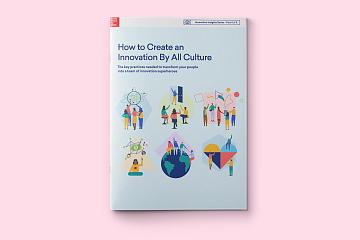Changing company culture, Employee Experience
Improving your company’s culture doesn’t need to take as much time as you may think. Small daily changes can pay off in employee productivity and loyalty.
“I’m swamped, and I just don’t have the time right now.”
Sounds familiar, right? Just about everyone out there can relate to these words. Whether you’re a member of the C-suite juggling multinational offices in between your own family time or a frontline worker trying to manage customer expectations while pursuing your own professional development, it seems like none of us have enough time these days. This includes overcoming common HR challenges.
Unfortunately, we’ve found that this lack of time is often a reason for deprioritizing the employee experience. It’s not that managers don’t care about improving company culture, — they just don’t feel they have the time to properly measure and improve it.
We’ve even seen this among many Great Place To Work® Certified™ companies. These are workplaces that know the impact a strong company culture can have on their bottom line, but worry they need to push it aside simply because they are too swamped.
Small habits can have big impact
The good news is that improving company culture takes less time than you think. Powerful changes can happen without requiring more time. You just need to make a few small shifts in habits.
Here are four new habits you can introduce right now that will have the biggest impact on your workplace:
1. Inspire a sense of belonging
Our research on the eight elements of company culture has found that when employees feel a sense of belonging to their organization — meaning that they feel accepted and valued — they are three times more likely to look forward to coming to work and five times more likely to want to stay at the company for a long time.
Belonging is more than just feeling appreciated as a worker; it’s about feeling appreciated for who they are as a person.
Implementing small habits like dedicating one day a week to eating lunch or setting up virtual 1:1s with your team members can help you get to know each other as a person. It humanizes the manager–employee relationship by making both sides more approachable, which in turn fosters respect and belonging.
2. Enhance collaboration when developing new ideas
When employees feel like they are free to express their ideas, they are a whopping 31 times more likely to think their workplace is an innovative one. And when employees feel like they belong to an innovative culture, they are more likely to feel connected, motivated, and inspired to do their best work.
Fostering a culture of innovation doesn’t require big R&D budgets or timelines. It’s more about encouraging employees to speak up daily by showing them a safe space for new ideas and candid discussion.
You can implement simple habits like reserving the last 10 minutes of every staff meeting for an open discussion about a specific topic, client challenge, or process improvement. It could also involve a simple email inbox like that of Certified workplace Altar’d State.
Altar’d State maintains an email address devoted to “bright ideas.” When associates submit an idea, the appropriate leader responds with their thoughts, whether or not the decision is to move forward with the suggestion. If an idea is not implemented, the response may include an explanation of why it might not be something to pursue at the time. Leaders acknowledge each idea and encourage direct, honest feedback.
Belonging is more than just feeling appreciated as a worker; it’s about feeling appreciated for who you are as a person.
Thanks to the Bright Ideas emails, Altar’d State removed several forms and paper documents that saved the company time and money. They also invested in a portal that gives staff better overall communication and uses less paper.
Seeking ideas for company changes and programs makes employees feel like valued members of the organization and helps improve company culture.
3. Encourage employee recognition
Even just a little bit of positivity can go a long way. Thank employees for good work in meetings and as you see them doing something well.
Our own research on employee recognition found that affirmation, feedback, and reward are the most effective for motivating employees. In fact, compared to employees who don’t feel recognized, those who do are 2.2x more likely to bring forward new ideas and 2x more likely to say that their coworkers are willing to go above and beyond.
Atlassian’s peer-to-peer recognition program, Kudos, provides a way to recognize colleagues for their amazing work. Often Kudos results from someone going above and beyond, or shipping a project they’ve been working on for months. Kudos is all about showing gratitude and pausing to recognize collaboration between team members.
Instead of having a heavyweight program, this lightweight model reinforces great work and behaviors without needing explicit direction or acknowledgment from the top.
4. Inspire a sense of meaning
Great workplaces are values-led. That means they use their beliefs and principles to lead the company, rather than just rules or policies.
Not only does this help to foster pride in the workplace — which our research shows makes employees twice as likely to want to stay with an organization for a long time — but it also helps to prevent a toxic company culture from forming.
A toxic culture is one in which negativity reigns. Employees don’t feel engaged or, worse, don’t feel safe. Gossip, mistrust, and bad habits are all signs of a toxic company culture.
Thankfully, small changes can help promote a company’s values, purpose, and positivity.
When employees feel like they belong to an innovative culture, they are more likely to feel connected, motivated, and inspired to do their best work.
One small way to inspire meaning is to choose words wisely when referring to work environments, job titles, or even in general communications. For example, at Marriott, employees who work behind the scenes are said to work in the “heart of the house,” not the “back of the house.”
Same strengths, new application
The skills you use every day to lead are the same ones you can use to build things like trust, pride, and belonging.
For example, if you are not a great public speaker and prefer to communicate in writing, try sharing your thoughts and insights with employees through a regular blog or newsletter. If you are a task-driven leader, use that focus to celebrate employee accomplishments with the same passion and determination that enable you to get jobs done.
These are things you can do even if you’re short on time. Not only that, but the productivity and innovation you might miss out on by not taking the time to improve your company culture could outweigh any time constraints currently holding you back.
Trust us, the results will be worth it — for employees and for you. And, when you’re ready to dig in deeper, administering employee surveys and using analytics tools like the Great Place To Work platform can help you quickly highlight areas that need attention, saving you time and money in the long run.
Get our white paper on the most common obstacles HR professionals face when creating a thriving environment and improving company culture.













